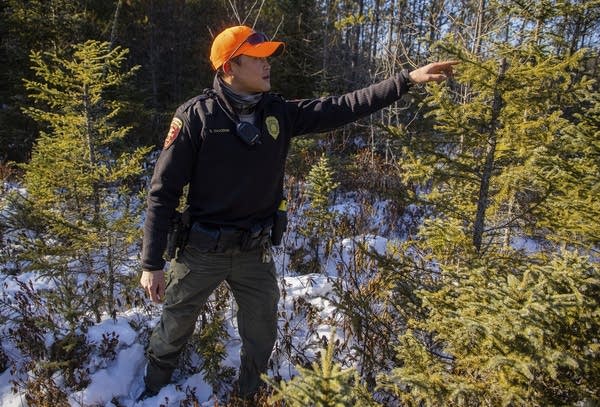Spruce top thieves: How demand for a north woods cash crop is sparking an illicit trade

Minnesota Department of Natural Resources conservation officer Shane Zavodnik examines an illegally cut spruce tree while standing in a frozen swamp in late November, on private property near Eveleth. Illegally cut spruce tips have helped grow a booming holiday greenery industry that's worth more than $20 million in Minnesota.
Derek Montgomery for MPR News
Go Deeper.
Create an account or log in to save stories.
Like this?
Thanks for liking this story! We have added it to a list of your favorite stories.


